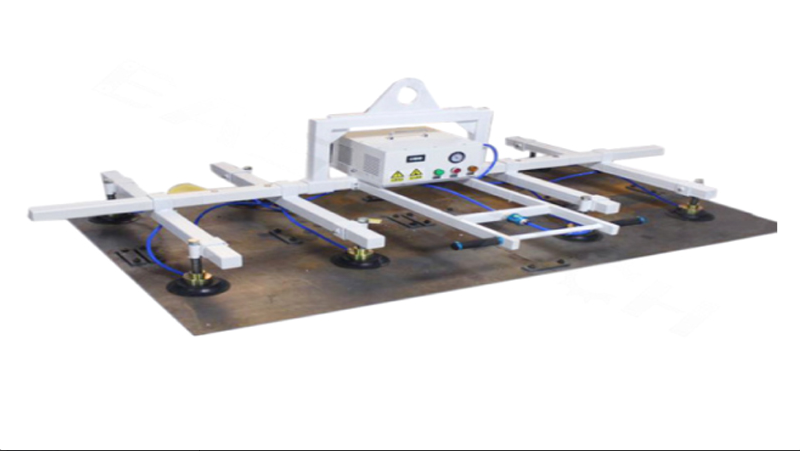Modern production processes would be impossible to imagine without using Vacuum Lifters to handle and lift goods. How else could heavy objects be loaded and unloaded from ships or vehicles, glass panels moved, wooden components held for milling, or cardboard quickly and reliably stacked?
One uses a suction cup, vacuum plate, or table to apply suction. Hold an object firmly by doing so. This incredibly efficient technique makes it possible to move, lift, or transport objects and supply materials to manufacturing processes. Or to firmly and gently clamp parts during processing. Therefore, a lot of automated production processes use vacuum technology.
Scope of Vacuum Lifters
For instance, holding wooden parts in place on the machining equipment and moving them along the entire production line in the case of woodworking. But also for pick-and-place uses in the food, packaging, and electronics industries. Even in the printing industry, they prefer transporting individual sheets of paper without wrinkling.
In many industrial sectors, frequent use of Glass Lifters and vacuum lifting equipment is a practice in recent years to lift and handle materials and components with flat or smooth surfaces. In particular, vacuum lifting equipment makes it simple to lift and handle materials like metal or glass plates, concrete slabs, pipes, plaster boards, plastic laminates, cement bags, beer kegs, tins, etc. Vacuum lifting equipment uses suction pads instead of traditional lifting accessories to attach and lift loads.
Tips To Use Vacuum Lifters Practically
1. Whether you’re using lifters for industrial purposes or in a factory, they must be tested and inspected before each shift.
2. Avoid or stop using the vacuum lifting device until it guarantees a safety level, and always report any unusual operation or safety concerns to a qualified individual.
3. As soon as a vacuum lifting device has an “Out of Order” caution, do not use it until it functions well again.
4. Do not use the lifter if there are no capacity or safety markings.
5. Verify that the lifting mechanism and any load-attaching equipment (such as a crane, chains, or hook) are rated to support the lifter’s and the load’s combined weight.
6. Use a lifter only on smooth, nonporous, or barely porous loads. The lifter’s capacity to compensate for air leakage is influenced by the porosity/roughness of the surface. Testing all loads to achieve the highest level of vacuum lifter technology.
7. To find out what vacuum level the lifter is rated for, consult the specifications.
8. For every 1000 feet above sea level, reduce load capacity by 3.5 percent.
9. Lifting should be of only clean loads; loose debris, dirt, scale, chips, etc., should be brushed off.
10. Avoid using a lifter on heavily pitted, scaled, or rusted loads.
11. Never lift anything heavier than the load rating.
The accomplishment of heavy-duty load handling is possible with vacuum lifters, giving operators a feeling of “floating,” making raising and lowering products simple. However, because of how simple they are, users may become overconfident; professionals recommend using this equipment correctly and safely. Take advantage of this by adhering to the five vacuum lifter safety rules.
Using Vacuum Lifters provided by Shree Krishna Industries offers:
· Time- and cost-efficient lifting.
· Safe grip without damaging the goods.
· Ergonomic and safe for the operator.
· Experienced vacuum lifter manufacturers
The user is always put first in the design of their Glass Lifting systems. Anyone can learn how to use the lifters in a matter of minutes due to their ease of use. An ergonomic handle is equally comfortable for right-handed and left-handed users and helps ensure that the operator is in a good position.

